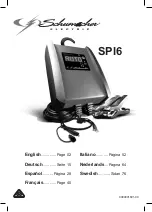
Supplemental Seat-Mounted Side Air Bag (SAB)
Inflator Units
The Supplemental Seat-Mounted Side Air Bags (SAB) are
designed to activate only in certain side collisions.
The ORC determines if a side collision requires the side
air bags to inflate, based on the severity and type of
collision.
Based on the severity and type of collision, the side air
bag inflator on the crash side of the vehicle may be
triggered, releasing a quantity of non-toxic gas. The
inflating SAB exits through the seat seam into the space
between the occupant and the door. The SAB fully inflate
in about 10 milliseconds. The side air bag moves at a very
high speed and with such a high force that it could injure
you if you are not seated properly, or if items are
positioned in the area where the side air bag inflates. This
especially applies to children.
Supplemental Side Air Bag Inflatable Curtain
(SABIC) Inflator Units
During collisions where the impact is confined to a
particular area of the side of the vehicle, the ORC may
deploy the SABIC air bags, depending on the severity
and type of collision. In these events, the ORC will
deploy the SABIC only on the impact side of the vehicle.
A quantity of non-toxic gas is generated to inflate the side
curtain air bag. The inflating side curtain air bag pushes
the outside edge of the headliner out of the way and
covers the window. The air bag inflates in about 30
milliseconds (about one-quarter of the time that it takes
to blink your eyes) with enough force to injure you if you
are not belted and seated properly, or if items are
positioned in the area where the side curtain air bag
inflates. This especially applies to children. The side
curtain air bag is only about 3-1/2 in (9 cm) thick when
it is inflated.
2
THINGS TO KNOW BEFORE STARTING YOUR VEHICLE
71
Summary of Contents for Journey 2011
Page 1: ...Journey O W N E R S M A N U A L 2 0 1 1 ...
Page 4: ......
Page 7: ...INTRODUCTION 5 ...
Page 10: ......
Page 128: ...Voice Tree 126 UNDERSTANDING THE FEATURES OF YOUR VEHICLE ...
Page 158: ...Voice Tree 156 UNDERSTANDING THE FEATURES OF YOUR VEHICLE ...
Page 159: ...3 UNDERSTANDING THE FEATURES OF YOUR VEHICLE 157 ...
Page 164: ...Voice Tree 162 UNDERSTANDING THE FEATURES OF YOUR VEHICLE ...
Page 165: ...3 UNDERSTANDING THE FEATURES OF YOUR VEHICLE 163 ...
Page 166: ...164 UNDERSTANDING THE FEATURES OF YOUR VEHICLE ...
Page 167: ...3 UNDERSTANDING THE FEATURES OF YOUR VEHICLE 165 ...
Page 260: ...INSTRUMENT CLUSTER 258 UNDERSTANDING YOUR INSTRUMENT PANEL ...
Page 332: ......
Page 374: ...372 STARTING AND OPERATING ...
Page 426: ......
Page 452: ......
Page 524: ......
Page 535: ...INDEX 10 ...
















































